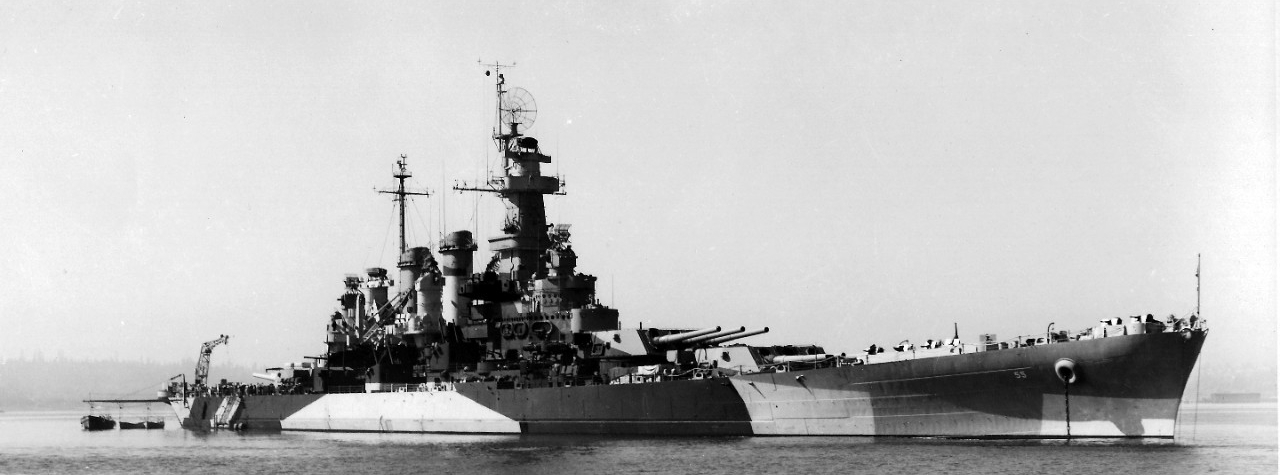
USS North Carolina (BB 55)
USS North Carolina, lead ship of a class of 35,000-ton battleships, was built at the New York Navy Yard. When commissioned in April 1941, she was the first new battleship to join the fleet in nearly two decades. Following over a year of prolonged shakedown and training cruises in the Atlantic area, North Carolina went to the Pacific in June 1942. She took part in the Guadalcanal campaign during the rest of that year and some of 1943, covering the initial landings there and participating in the Battle of the Eastern Solomons in August 1942. She was damaged by a Japanese submarine torpedo on 15 September, in an attack that also fatally damaged USS Wasp (CV-7), but returned to the Solomons combat zone after a few months' repairs.
In November 1943, North Carolina assisted in capturing enemy positions in the Gilbert Islands. This began a pattern of operations for her that lasted for the rest of World War II: serving in the anti-aircraft screen of aircraft carrier task forces and occasionally using her heavy guns to bombard Japanese-held islands. In these roles, during 1944 she was involved in the Marshalls operation in January-February, attacks on Central Pacific targets through the late winter and spring, the Marianas invasion and Battle of Philippine Sea in June, and Western Pacific carrier strikes in November and December.
North Carolina continued her Western Pacific activities in 1945, participating in the invasions of Iwo Jima in February and Okinawa in March and April. The battleship also screened carriers on raids throughout the combat zone, including attacks on the Japanese home islands. She was off Japan in August and September, during the weeks just before and after that nation's surrender. North Carolina returned to the United States in October 1945 and operated in the Atlantic until she was inactivated in 1946. Decommissioned in June 1947, she was part of the "mothball" fleet until stricken from the navy list in June 1960. The following year, North Carolina was transferred to the State of North Carolina to become a memorial and museum at Wilmington, where she remains to this day.


